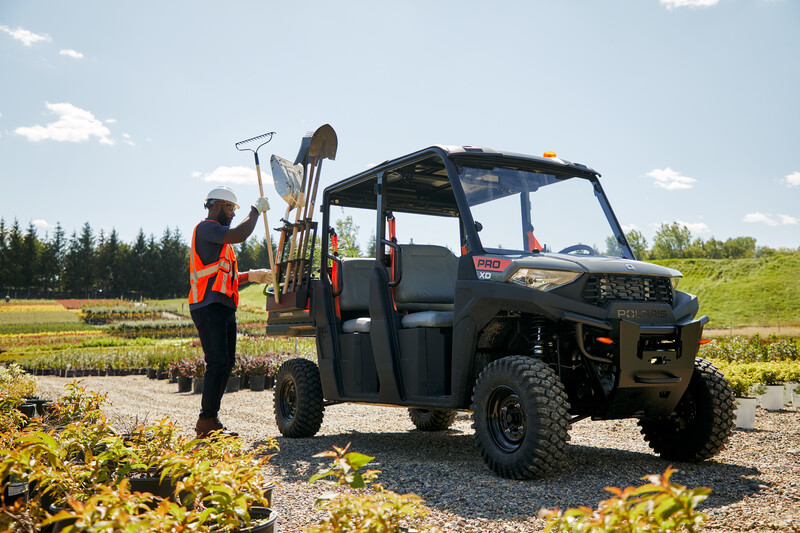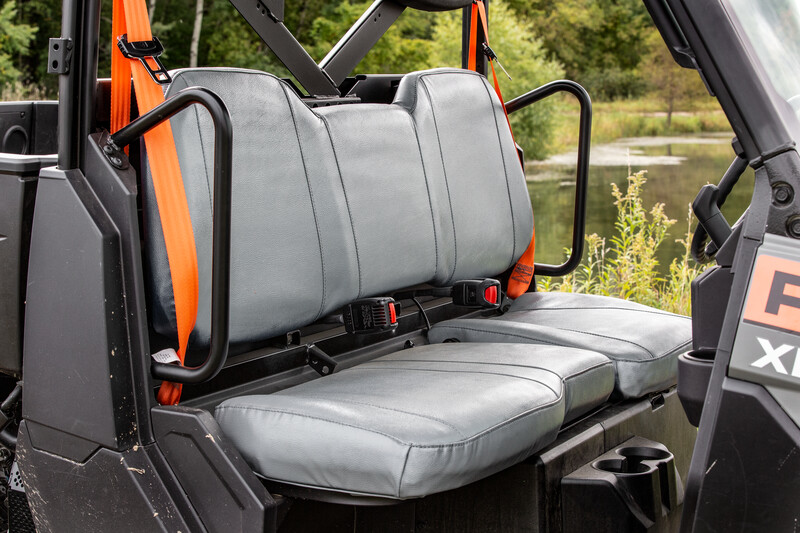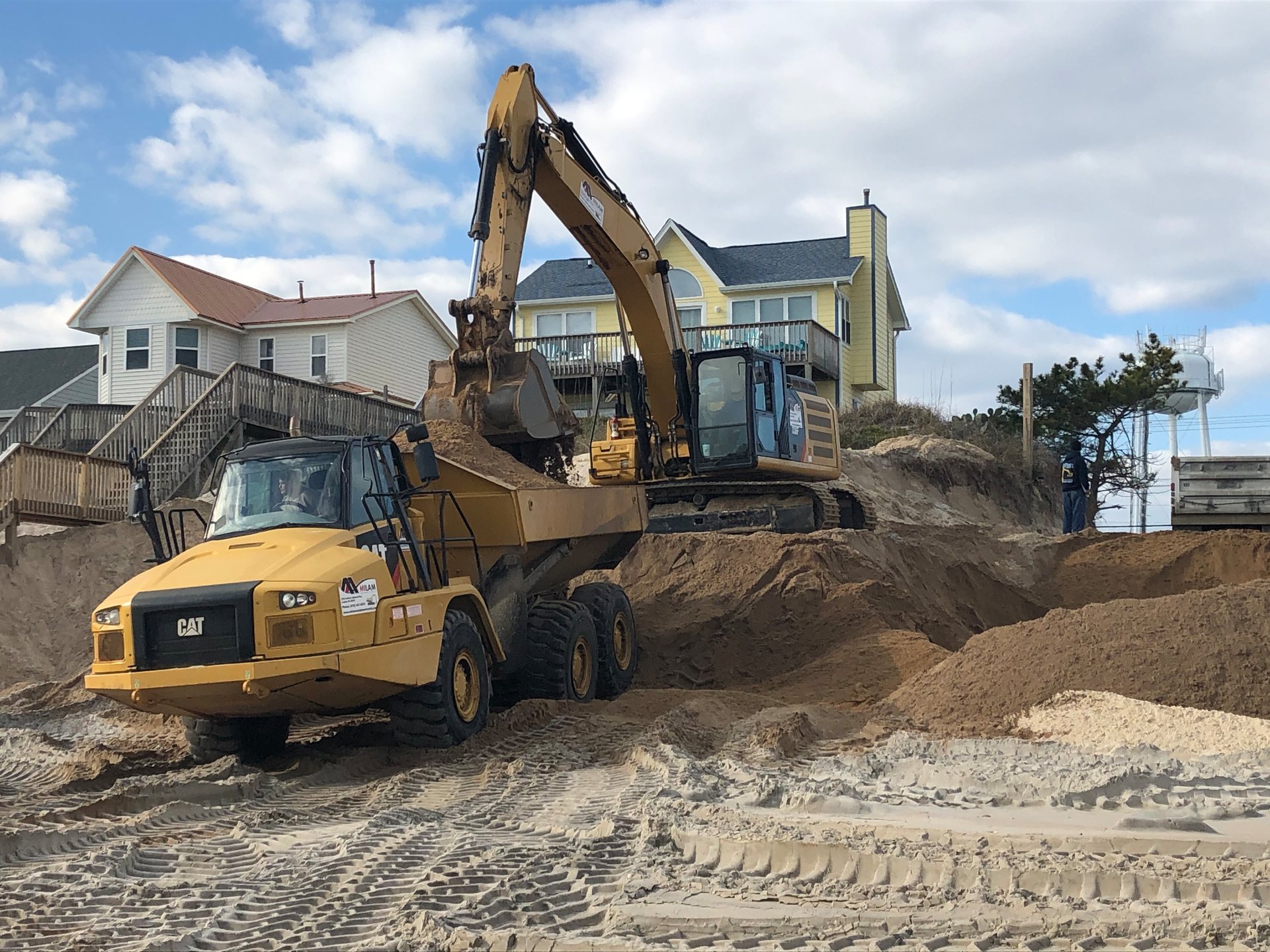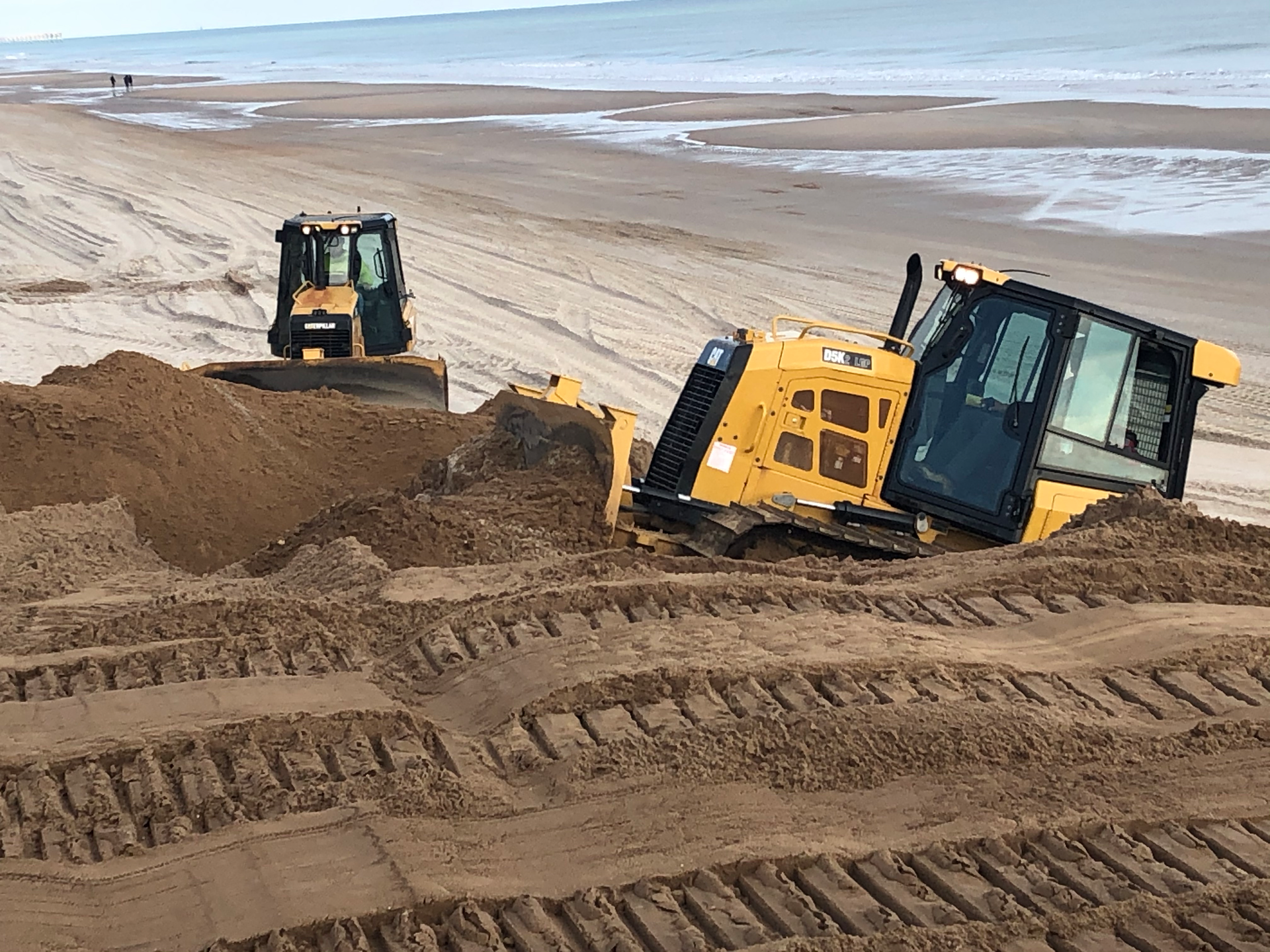Polaris Launches Mid-Size Pro XD UTV as a Truck Alternative on the Jobsite
Polaris has rolled out a new mid-size entry to its Pro XD Commercial lineup of UTVs, designed for hauling workers and tools around construction sites.
The mid-size UTV, which stands for utility terrain vehicle, comes in two- and four-door versions and features a bed with a 500-pound capacity. Polaris touts the new all-terrain vehicle as a lower-cost alternative to a truck or van for moving about the jobsite. Its compact size enables it to maneuver in tight spaces.
Along with hauling tools and people, it can move supplies, aggregate and other materials. The company says it can also handle mud, nails and obstacles better than a truck or van when traveling the jobsite.

Haul aggregate and other materials with the 500-pound capacity bed on the Polaris mid-size Pro XD UTV.PolarisThe mid-size vehicle follows the introduction of the company’s full-size Commercial models in 2018. It’s made for those who don’t need the 1,000-plus-pound bed capacity of the full-size UTVs. Polaris says the mid-size version provides 200-hour oil service intervals, as well as the same safety features of the full-size models, including adjustable speed calibration, operator warnings, backup horn and pedestrian alarms, high-visibility lights and improved operator visibility.
“Not all of our customers need to haul over 1,000 pounds in the cargo bed, but they still want a heavy-duty driveline, 200-hour intervals between oil changes, durable components and vehicle fault alarms,” says Aaron Stegeman, director of commercial sales, service and customer experience for Polaris Commercial.

The mid-size Polaris Pro XD UTV is also designed for carrying tools around on the jobsite.PolarisThe mid-size Pro XD features heavy-duty driveline components for longer life. The seats are made of Kevlar-backed vinyl that is puncture resistant. The heavy-duty jobsite tires are 8-ply with nondirectional treads. Parts are designed to be universal and easy to replace. The company also says it made the roof and doors as tightly sealed as possible to keep out dust and the elements.
The UTV runs on a 39.5-horsepower Polaris Pro Star 570 DOHC (dual overhead cam shaft) gas engine.
Both the two-door and four-door models have selectable 4×4 drive. Top speed is adjustable up to 40 mph. Ground clearance is 10 inches.
Total payload is 1,000 pounds on the two-door model and 1,250 on the four-door UTV. Towing capacity is 1,500 pounds.

The seats in the new mid-size Polaris Pro XD UTV are made of Kevlar-backed vinyl for puncture resistance.PolarisThe MSRP on the two-door model starts at $12,499, and for the four-door at $13,999.
Available accessories include various types of windshields, a windshield wiper and washer system, various types of roofs and roof liners, doors, rear window panels, lighting, sideview mirrors, among other add-ons.
Did you miss our previous article…
https://www.tortowheaton.com/?p=468
Contractors Get First Glimpse of Deere Electric 310 X-Tier Backhoe (Video)
Product details are still sketchy after all, it’s still a test machine but John Deere used the Utility Expo to strut out its electric backhoe, the 310 X-tier E-Power, now in real-world testing with utility client National Grid.
“The battery electric technology on the 310 X-tier is one way we’re going to give leading-edge performance with innovative technology,” says Justin Steger, Deere solutions marketing manager. “It is geared toward customers that have stated carbon emissions-reduction goals.”
Throughout the spring and summer, National Grid used the machine to perform a variety of jobs, including trenching, loading, digging, backfilling and using a breaker, says Brian Hennings, Deere product manager, speaking to Equipment World. Up next: cold-weather tests.
The “X-tier” identifies that it has a unique power train, says Hennings. “If we eventually do come out in the marketplace and things look very positive — the model would be offered as a 310 X.”
The placard next to the 310 X-tier at the Utility Expo said the machine represented an “early Phase 1 development in clean-energy solutions,” the same language Deere used in its January announcement that it was testing the machine. Deere will head into Phase 2 testing next year, Hennings says, and targeting energy consumption by specific components. “We want to offer at least an 8- to 10-hour composite runtime,” he says.
“We’re very early in this journey, and it’s going to take many iterations to meet customer expectations,” Hennings says, noting that even retaining the top 25 mph travel speed can consume a great deal of power. “It’s going to be more a matter of years instead of a matter of months.”
The 310 X-tier is positioned in direct comparison with the Deere 310L. Deere knows the electric unit will be compared with the runtime of the diesel unit, which has a 34-gallon tank and typically provides more than a day’s worth of work. One positive for the electric machine: it has an outside-machine decibel level of 75 while the 310L runs at 89 decibels. “It doesn’t sound like a lot on paper, but it’s not as loud as my dishwasher,” Steger says.
Jordanne Waldschmidt, chief editor of Equipment World, caught up with Joe Dietz, the chief technology officer at excavation contractor Bob Dietz & Sons, New Paltz, New York, at the show. Dietz and his two brothers also serve as ambassadors for Deere, sharing their passion for the brand on social media. Here he gives his impressions after operating the 310X-tier for the first time:
CMSBrowserComponents.load({ el: ‘#vue-1633974608666-963’, name: ‘OEmbed’, props: {“mountPoint”:”/__oembed”,”url”:”https://youtu.be/Gf25ST98g6Y”,”attrs”:{“type”:”oembed”,”id”:”https://youtu.be/Gf25ST98g6Y”,”element”:”aside”}}, hydrate: false });
Hennings says utility companies, such as National Grid, along with municipalities working under emission mandates, are likely to be first adaptors of the 310 X-tier when it comes to market.
What we know now

John Deere
As mentioned, Deere compares the 310 X-tier with the diesel-powered 310L. It has a net peak power of 75 kilowatts (equivalent to 100 horsepower) at 1,600 rpm. The placard at the Utility Show posted 310 X-tier specs in line with those of the 310L:
14-foot 1-inch max dig depth.6,602-pound loader lifting capacity. 6,992-pound crowd cylinder digging force. 22.8 mph max travel speed.
One noticeable difference: the 310L has a listed operating weight of 14,669 pounds; for the 310 X-tier that gets bumped up to 16,119 pounds.
But again, these are just Phase 1 specs. “There will likely be many changes in the specs before it’s available for sale,” Hennings says.
John Deere announced in January that it had partnered with energy company National Grid an electric, natural gas and clean energy company serving more than 20 million customers in the Northeast to pioneer the machine.
At the time, Jason Daly, Deere global director, production systems, technology and marketing, called the project “another stepping stone in our backhoe innovation journey.” Adds Hennings: “This is an exciting project for the Deere backhoe design team.”
Did you miss our previous article…
https://www.tortowheaton.com/?p=465
From Beaches to Bases, This N.C. Contractor Loves to Move Dirt
Two things you quickly learn about Matt Mitchell is that he loves Sneads Ferry, North Carolina, where he has lived all his life.
And he loves dirt.
“A grown man might be a grown man, but somewhere deep down he’s still got a little boy in him,” he says. “And they all like to play with little toys and dirt.”
“I love the challenges,” he adds, when explaining why he loves being a contractor. “I really like doing the things they say you can’t do, or can’t be done.”
That attitude has led his business, C.M. Mitchell Construction Company, to grow to more than 50 employees, 35 pieces of equipment and annual revenues of $10 million to $13 million. For that and more, Matt is one of Equipment World’s 2020 Contractor of the Year Award finalists.
Hard lessons
Matt learned about hard work, honesty and integrity from his father, a retired Marine who had been stationed at nearby Camp Lejeune. His father and mother ran a little country store and tackle shop on Vultures Landing.
“Son, your word is all you’ve got,” his dad would tell him.
He helped instill a strong work ethic in Matt.
“As a Marine, he taught us how to work, and he taught us what our backs are made for,” Matt recalls. “When I was growing up, it was all back-breaking work. He wasn’t taking any shortcuts.”
They would also dig the graves for local residents who passed away. It was a free service his father started, and Mitchell Construction continues it to this day.
As a teen, Matt worked for a family friend who owned a construction company. Matt would run a dozer and excavator and drive a dump truck. He worked for him for about 10 years. Then the owner had a heart attack and sold the business.
Matt bought a commercial fishing boat, but that new career lasted only about 10 weeks. “I was there one day fishing, and I just said, ‘I’m done with this. I’m going back in the dirt business. I’m going to do it myself.’”
That was in 1994. He used the money from selling the boat to buy a farm tractor and a trailer. His parents co-signed for a $25,000 loan. Matt used that money to buy a 1974 dump truck, a backhoe and a dozer.
His brother Mel drove the dump truck, and Matt moved dirt. They cleared lots, put in driveway culverts, whatever people needed done.
He did a lot of subcontracting work and landed his first big job at Camp Lejeune. During that job, he met Theresa who was working for the general contractor on the project. She helped him with the paperwork, and he told her if she ever decided to leave her job, he wanted her to come work for him.
“I don’t think you can afford me,” she told him.
But in time he won her over, and they’ve been keeping C.M. Mitchell growing ever since.
With her as chief financial officer and Matt running the construction business, they’ve landed many multimillion dollar projects over the years.
Landing big jobs
The company won its first job over $1 million by traveling to Virginia to meet with a large construction firm. The company was planning a complicated project involving a 100-square-foot amphibious boat ramp at Camp Lejuene. Matt convinced them he could handle the work.
“We were so excited,” recalls Theresa. “We had a $2 million job.”

With Matt running the construction operations and Theresa running the office, the couple have built a successful construction firm in Sneads Ferry, N.C.Equipment WorldThey began hiring more employees. Along with the boat ramp, the project involved building docks, ponds and a parking lot, as well as installing sewer and drainage lines.
The work was going well, but the finances ran into trouble. Mitchell wasn’t getting paid by the contractor on the project, and the company needed the money to pay off the project’s financing.
The contractor eventually paid the $800,000 he owed Mitchell. But the stress of trying to collect it had left Matt and Theresa rethinking their business. “One minute you’re up there, and the next minute you could lose your home if somebody doesn’t pay you,” says Theresa. The couple were also raising their three sons at the time.
After another episode in which they had to take a contractor to court to get paid, they decided to reorganize and trim down. “We’re going to stop going after the big work,” she says. “Let’s gain control of what we’re doing.”
They became more cautious about the contractors they subbed for. They landed work with large contractors, which brought them multiple projects. And they paid on time.
“We were able to pick and choose who we worked for,” Theresa says. “We could do some background on them and make sure that the people we were trying to be a subcontractor for were of good character.”
Then the September 11 terrorist attacks caused the local construction economy to tank. Mitchell was able make it through with projects on military bases. Government projects also got them through the Great Recession.
In 2011, the company had grown to 40 or so employees. And Matt decided to scale back to about 25 workers. He started turning some of his attention toward other ventures. He opened a restaurant and a boat store. He bought two shrimp boats. He bought and renovated boats and sold them. Then he spent about five years building his own boat – all while still running his construction firm.
“I don’t know why this was going on,” says Theresa. She calls it his “nostalgia tour.”
Matt just laughs.
“But one thing about my husband,” she adds. “He has no hobbies. Everything he does has to generate revenue.”
Ramping back up
Meanwhile, the construction firm was doing well, holding steady. And eventually, many of the side ventures drifted away.
“Our real passion that really drives us is here,” Theresa says, referring to Mitchell Construction.

Dump trucks haul in sand and an excavator fills dump trucks on the beach to rebuild dunes in North Carolina eroded by Hurricane Florence.Equipment WorldTwo of their sons love construction work, and the couple want the company to be available for them.
The company has grown back to 50 employees. It updated its accounting software, switched to project management software and began using iPads on jobsites. They also increased pay and benefits to attract and keep good employees.
Along with the changes, the company has continued to benefit from Matt’s work ethic and quality standards.
“A lot of people really respect Matt,” Theresa says. “A lot of his employees respect him because he’s the type of guy who is out there in the ditch with them.”
The company also maintains a family atmosphere. Theresa cooks lunch each day at the office for employees. A number of the employees are actual family members.
Their oldest son, Mark, has worked with them since 2000 and recently branched out on his own to start a concrete business. Their youngest son, Matthew, is the company’s asphalt division supervisor. Matt’s two brothers and Theresa’s sisters also work for the company.
“We’ve always been a real tightknit family,” Matt says.
Moving dirt
One of Mitchell’s latest projects has been rebuilding the sand dunes on Surf City and North Topsail beaches, which had eroded during Hurricane Florence.
The projects involved hauling in and placing more than 200,000 cubic yards of sand. Mitchell dump trucks came and went hauling sand from miles away, while excavators and dozers moved like clockwork to build the dunes.
“I can move dirt, and I love moving dirt,” Matt says.
Surf City Town Clerk Stephanie Hobbs agrees.
“They’re a great company,” she says. “I would give them the highest rating you have. They show up in a timely manner and get the job done on time and on budget.”
Matt attributes his success to hard work and recommends the same for new contractors.
“You’ve got to work hard. You’ve got to put your time in,” he says. “When everybody else is off having fun, you’ve got to go make a deal with somebody.”

C.M. Mitchell Construction dozers rebuild dunes damaged by Hurricane Florence.Equipment World
Did you miss our previous article…
https://www.tortowheaton.com/?p=460
Diesel Prices Jump as Crude Oil Hits Highest Price Since 2014
Increased demand amid the easing of the pandemic and OPEC+ supply limitations have caused the price of diesel to jump 10.5 cents in the past week. The average retail price of a gallon of on-highway diesel soared to $3.47 during the week of October 4, according to the U.S. Department of Energy’s Energy Information Administration. That’s $1.08 higher than just one year ago.
The nation’s most expensive diesel on average is in California at $4.369, while the least expensive diesel on average is $3.203 a gallon in the Gulf Coast. The Midwest region saw the nation’s highest one-week increase at 10.4 cents. The smallest one-week increase was 3.0 cents in California.
The Biden administration has urged OPEC+ to increase production and is considering releasing crude oil reserves to cool prices. U.S. West Texas Intermediate crude oil hit its highest price since 2014 at $81.06 per barrel. Crude oil accounts for 49%t of the cost of a gallon of diesel.
Price increases this fall were also impacted by storm damage. Several refineries in Louisiana are still preparing to restart after flooding and power outages caused by Hurricane Ida. Louisiana’s 17 oil refineries account for nearly one-fifth of the nation’s refining capacity and can process about 3.4 million barrels of crude oil per day, says the U.S. Energy Information Administration.
Complete diesel price information is available on EIA’s website.

Diesel prices are up more than $1 per gallon compared to one year ago.U.S. Energy Information Administration
Did you miss our previous article…
https://www.tortowheaton.com/?p=457